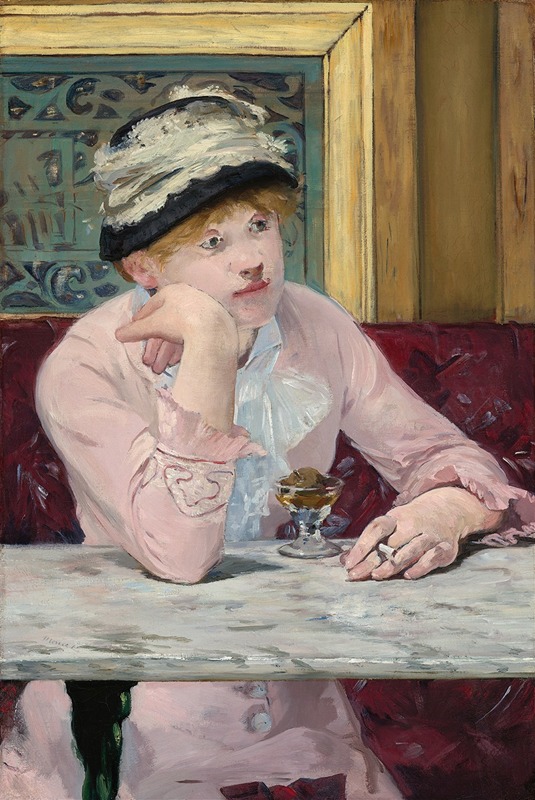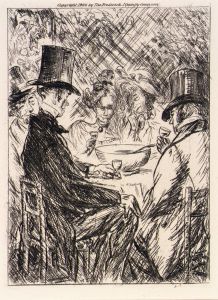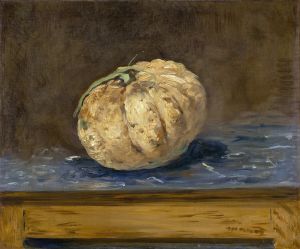
Plum Brandy
A hand-painted replica of Édouard Manet’s masterpiece Plum Brandy, meticulously crafted by professional artists to capture the true essence of the original. Each piece is created with museum-quality canvas and rare mineral pigments, carefully painted by experienced artists with delicate brushstrokes and rich, layered colors to perfectly recreate the texture of the original artwork. Unlike machine-printed reproductions, this hand-painted version brings the painting to life, infused with the artist’s emotions and skill in every stroke. Whether for personal collection or home decoration, it instantly elevates the artistic atmosphere of any space.
"Plum Brandy" is a painting by the renowned French artist Édouard Manet, created in 1877. This work is a notable example of Manet's exploration of modern life and his innovative approach to painting, which played a significant role in the transition from Realism to Impressionism.
The painting depicts a solitary woman seated at a café table, with a glass of plum brandy in front of her. The setting is likely a Parisian café, a common social venue during the late 19th century, which Manet frequently used as a backdrop to capture the essence of contemporary urban life. The woman is dressed in a simple, yet elegant, outfit, and her expression is somewhat contemplative, suggesting a moment of introspection or perhaps melancholy.
Manet's use of color and light in "Plum Brandy" is characteristic of his style during this period. The painting features a subdued palette, with soft, muted tones that convey a sense of intimacy and immediacy. The brushwork is loose and fluid, a technique that Manet employed to capture the fleeting effects of light and atmosphere. This approach also reflects the influence of the Impressionist movement, which Manet was closely associated with, although he never fully embraced its techniques.
The composition of "Plum Brandy" is carefully balanced, with the figure positioned slightly off-center, creating a sense of depth and space. The glass of plum brandy serves as a focal point, drawing the viewer's attention to the central theme of the painting. The reflection of light on the glass and the subtle play of shadows add to the realism of the scene, demonstrating Manet's skill in rendering everyday objects with precision and sensitivity.
"Plum Brandy" is often interpreted as a commentary on the social dynamics of the time, particularly the role of women in public spaces. The presence of a woman alone in a café was a relatively new phenomenon in the 19th century, reflecting the changing social norms and the increasing visibility of women in urban life. Manet's portrayal of the woman in "Plum Brandy" captures this shift, presenting her as an independent figure, yet also highlighting the isolation that can accompany such independence.
This painting is part of Manet's broader body of work that frequently depicted scenes of modern life, including cafés, bars, and other social settings. His interest in these subjects was driven by a desire to capture the realities of contemporary society, often focusing on the interactions and experiences of individuals within these environments.
"Plum Brandy" is housed in the National Gallery in London, where it continues to be appreciated for its artistic merit and historical significance. The painting remains a testament to Manet's ability to blend traditional techniques with modern themes, making him a pivotal figure in the history of art. Through works like "Plum Brandy," Manet not only documented the changing world around him but also influenced future generations of artists, leaving a lasting impact on the development of modern art.


















